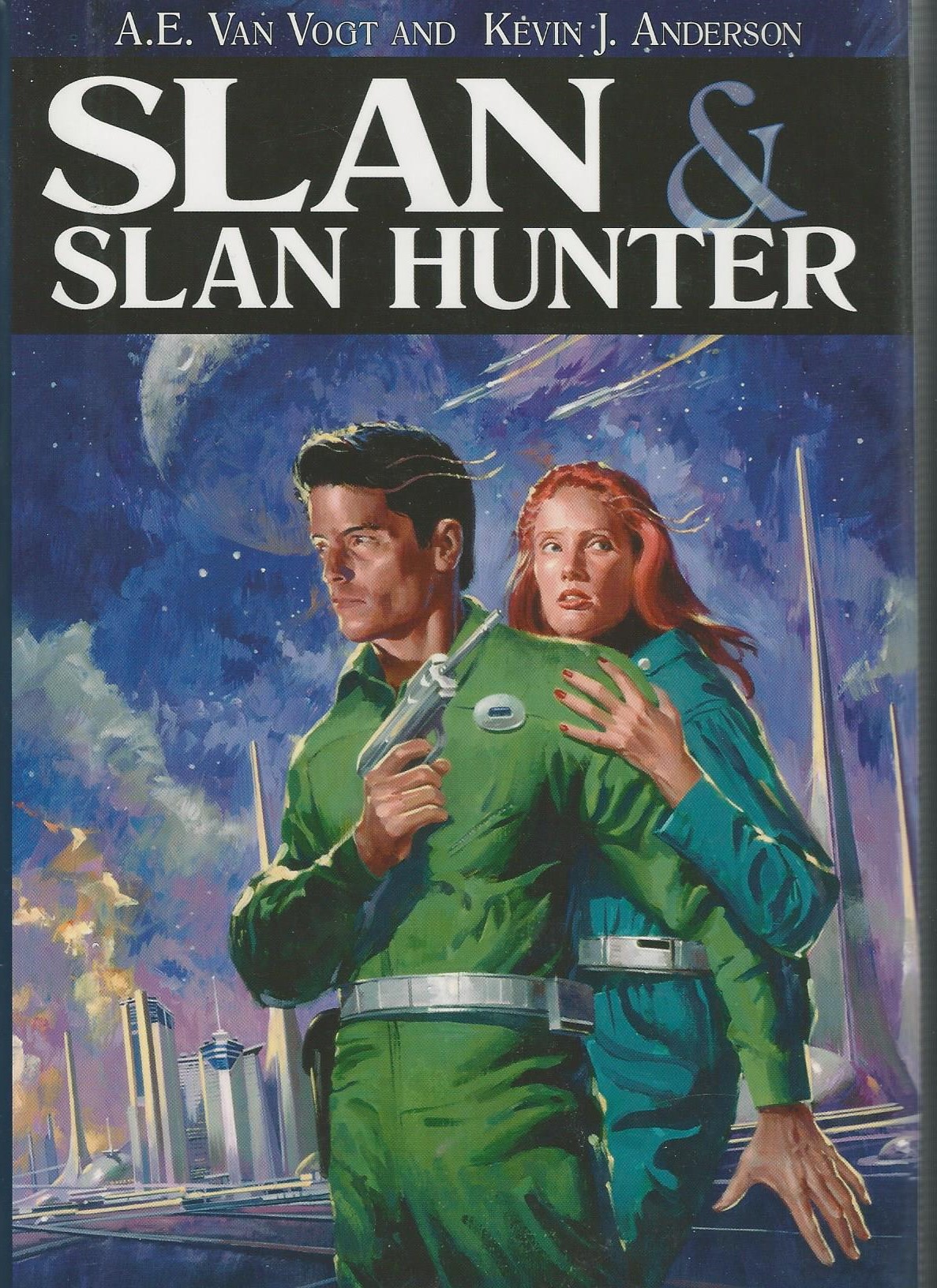In August, 2016, the World Science Fiction convention was held in Kansas City. Even though I’m a science fiction fan from way back, I was never a conventioneer. But I had read about the world conventions since my youth, eagerly devouring Isaac Asimov’s chatty commentary as he showcased the Hugo Award winners in his anthologies. When the world converged on the nearby metropolis to fete the brightest and best of the science fiction world, I had to be part of it.
For several years now, the world conventions have had the option of honoring science fiction works that were published 25, 50, or 75 years earlier if there had been no Hugo Awards given for the year chosen. Thus, Kansas City opted to go back 75 years and pay tribute to 1941.
To my horror, the Retro-Hugo for 1941 was given to A. E. van Vogt (1912-2000) for Slan.
Uggh! Why is this badly written novel a beloved science fiction classic? There is no character development. The plot falls apart with any attempt at inspection. The story seems to have been contrived page-by-page without benefit of an outline.
The answer must be historical. Somewhere in the transition from Gernsback-era early pulp sf, when most stories were westerns with rocket ships and ray guns, to the loftier sf of the Campbell era that contained actual science fictional concepts, van Vogt came along bursting with ideas and the story-telling impulse of a child playing make-believe with his toys. In 1940, van Vogt’s story-telling verve and his ability to evoke the “sense of wonder,” made him a darling of the fans. I get it, because in my own youth, probably about age 15, I discovered van Vogt’s “The Weapon Shops of Isher,” and I was bowled over, because it was so “out there.”
One should give van Vogt a pass on the clunky prose. Pulp writers, and dime novel writers before them, were paid a pittance for their work, and they had to churn it out. There was no time for rewrites and editing. Many great and beloved authors that I love and respect were not prose stylists. Edgar Rice Burroughs, for instance, and Sax Rohmer. Some great pulp writers rose above and became accomplished and effective authors who could rule bestseller lists in their later years. John D. MacDonald, Erle Stanley Gardner, and Louis L’Amour come to mind, but they were the exceptions. Most pulp authors who wrote on into later careers of paperback originals or hardcover bestsellers maintained an patina of bad writing about their prosody that flavored their work with a touch of nostalgia but didn’t harm the overall effect. Isaac Asimov, Jack Williamson, and many others exhibited this trait.
The problem with van Vogt is that his plots read like he is making them up as he goes along, and you can never escape the feeling that he is just a little boy providing a narrative for his sandbox toys. Bluntly, Slan is a mess. The hero, Jommy Cross, flits around in a rocket ship that usually just flies around like a regular jet plane, but at one point tunnels underground, and at another point jets to Mars for a quick visit. You can hear van Vogt in the background making vroom-vroom noises with his toy rocket as he arbitrarily decides where to send it. There is a certain space-opera charm to the rocket-ship with the atom blasters on its nose that can tunnel under the earth, a la E. E. Smith and Edward Hamilton. But such space opera seems out of place in a story that started out as a parable about a misunderstood, unfairly maligned minority fighting against prejudice (the slans, who have mind-reading power, and are treated with fear and suspicion by the rest of society). To the fans of 1940, the attraction of van Vogt was his mixing of such disparate elements into the same story. This made him seem “complex” to voracious 1940’s teenagers hungry for new frontiers in science fiction. Today, “complex” seems like a generous judgment when the result is a disjointed tangle of ideas that do not belong together.
One of my only fan letters to a science fiction writer was a letter I wrote to Damon Knight praising him, not for his stories, but for his criticism. In particular, I was impressed at how he thoroughly trashed van Vogt. Knight’s famous article was mostly attacking van Vogt’s The World of Null A, but Knight’s criticisms can also be levelled at Slan. There are so many holes in the plot that the Slan could easily be re-titled Sieve. Why does Jommy (the young slan bent on avenging the murders of his parents) have to wait several years before going to the cave where his father’s research is hidden? What was his father’s research? Van Vogt can’t seem to decide whether Jommy’s dad invented an atomic weapon or just atomic energy in general. How does Jommy know that the tendrilless slans are slans at all if they don’t have tendrils and can’t read minds?
The two big gee-whiz moments in Slan pretty much negate the entire plot. Warning: spoilers here. But, who cares?—this novel is for historical interest only, especially now that the Kansas City Worldcon voters have enshrined it in the Retro-Hugo gallery.
Big Moment #1: Van Vogt introduces the young slan girl Kathleen Gray who is living as a seeming captive in the supreme leader’s palace, and then he suddenly kills her off, only to have her reappear in the final page, like it was some big surprise that she wasn’t dead. There is no internal plot-logic whatsoever to keeping it a secret that she had not died. Perhaps a 12-year old reader, or van Vogt in his sandbox, would find it a fascinating plot twist that a character thought to be dead turned out to be alive, but it does not make any plot-sense.
And Gee-Whiz Moment #2: the elusive true slans that Jommy have been looking for all the way through the novel turn out to be living in the palace and running the world. They, and the tyrannical supreme leader Kier Gray, have been in charge all along. This is van Vogt’s big “sense of wonder” moment in the novel. But, wait a minute! Why were Jommy and his mother being hunted down, and his mother killed, at the beginning of the story if the slans were running the show? And, if the true slans were so much superior to humans, why were they all in hiding and avoiding letting the world know about the true order of things?
The answer is. . .because van Vogt is in his sandbox making vroom-vroom noises with his rocket-ship toys and playing make-believe.

